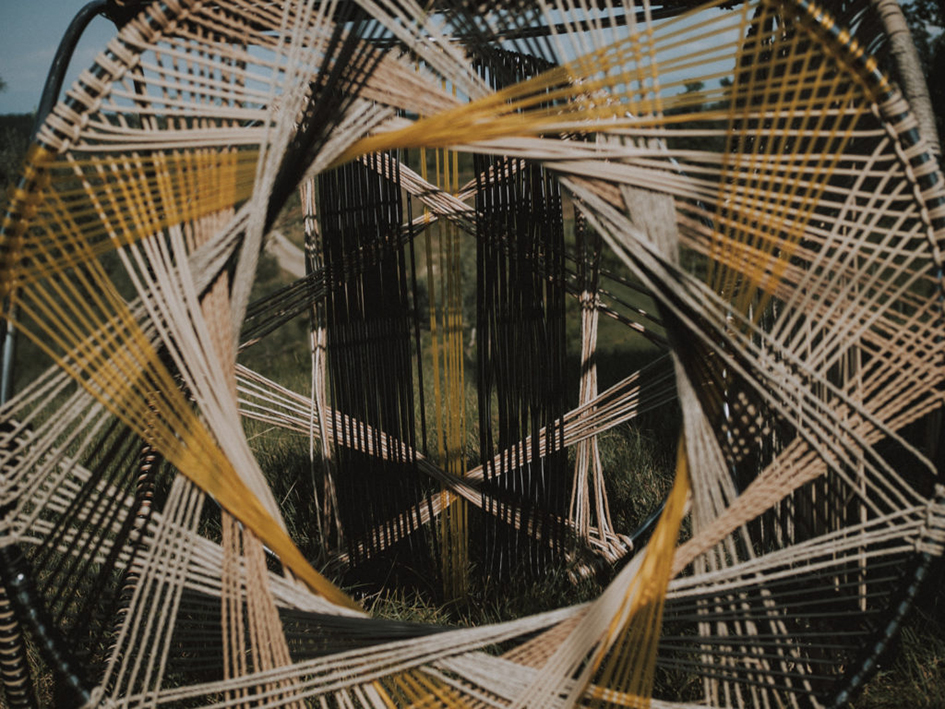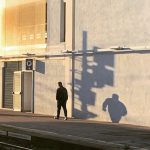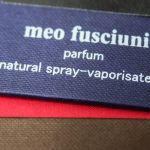Scroll down for English version
Auto produzione, auto organizzazione, cooperazione e attenzione alle tradizioni artigianali e industriose del territorio sono stati i principi che hanno guidato i 12 studenti e giovani architetti lungo tutto il percorso di formazione, dalla fase di progettazione a quella di produzione dei prototipi, della prima edizione della NOW Summer School al Vigne Musuem intitolata Architettura per la Natura.
Questo post dà spazio alle immagini e alle parole di alcuni dei partecipanti per rivivere momenti, emozioni e aneddoti accaduti durante le giornate trascorse a progettare, produrre e a dare forma ai pensieri.
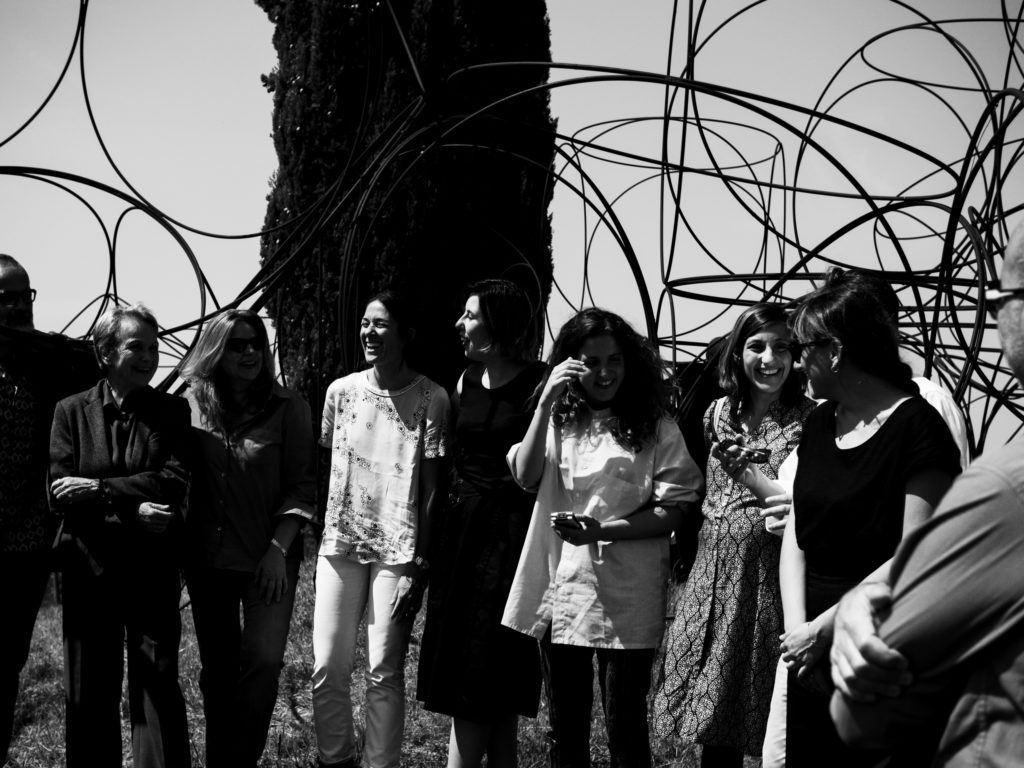
ph. Sergio Coretti
Le nostre mani hanno intrecciato e si sono strette tra loro, hanno passato il vino e il pane, lo spago e i sarmenti; e hanno stretto ulteriormente, annodando con cura e a fondo. Sono servite per comunicare con la gestualità, e poi di nuovo a intrecciare il Pvc e sorreggere i telai, e costruire uno spazio per la collettività. Le persone tra loro hanno intrecciato altri tipi di rapporti, e con la vigna altri ancora, e con la tradizione altri ancora, ed è stato tutto grazie alle nostre mani.
Arch. Ilaria Canavese – Laureata allo IUAV Venezia
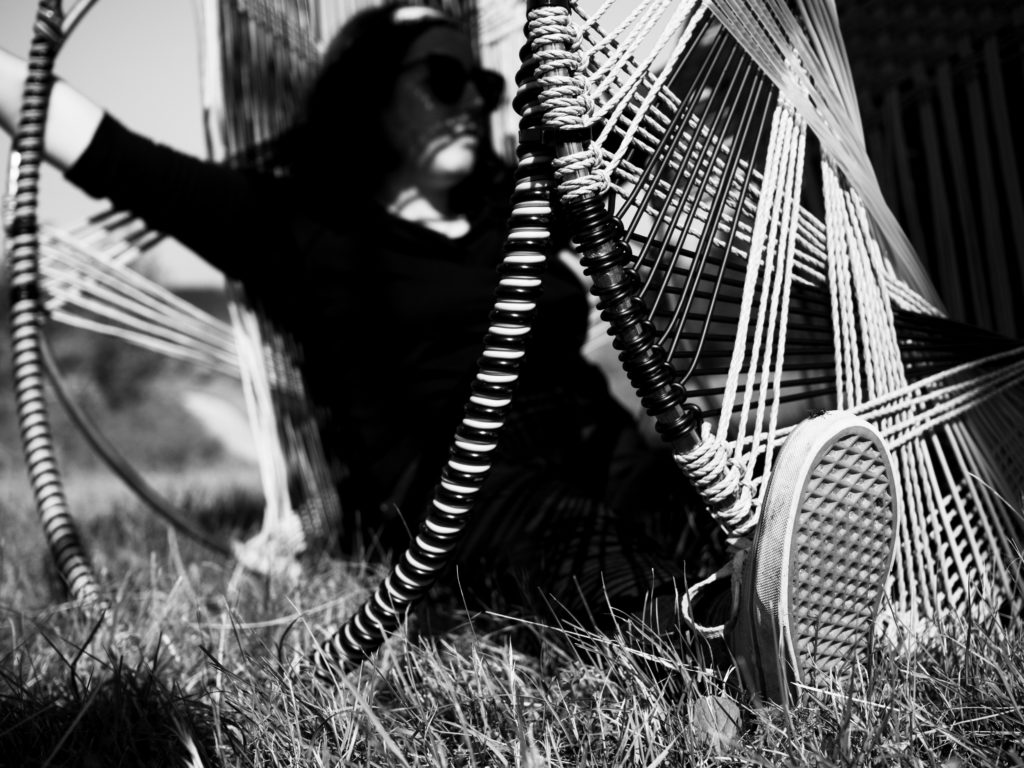
Ilaria Canavese, ph. Sergio Coretti
Osservare i cerchi metallici e le matasse di filo, certo spaventava un po’ tutti: che ne sarebbe risultato? Ma se da soli l’opera sembrava impossibile, ecco che bastavano altre due mani per sorreggere il cerchio e procedere con la tecnica dell’intreccio, dando forma alle fantasie che prima erano sepolte in un groviglio di fili. E che risultati inaspettati! Composizioni di colori e di forme, intrecci di ogni genere, sedute componibili, giocattoli XXL per bambini curiosi… Osservandoli lì, al Vigne Museum, non si può non pensare alle mani che li hanno intrecciati, alle relazioni e all’amicizia strette in quei giorni.
Arch. Lorenzo Lazzari – Laureato allo IUAV Venezia
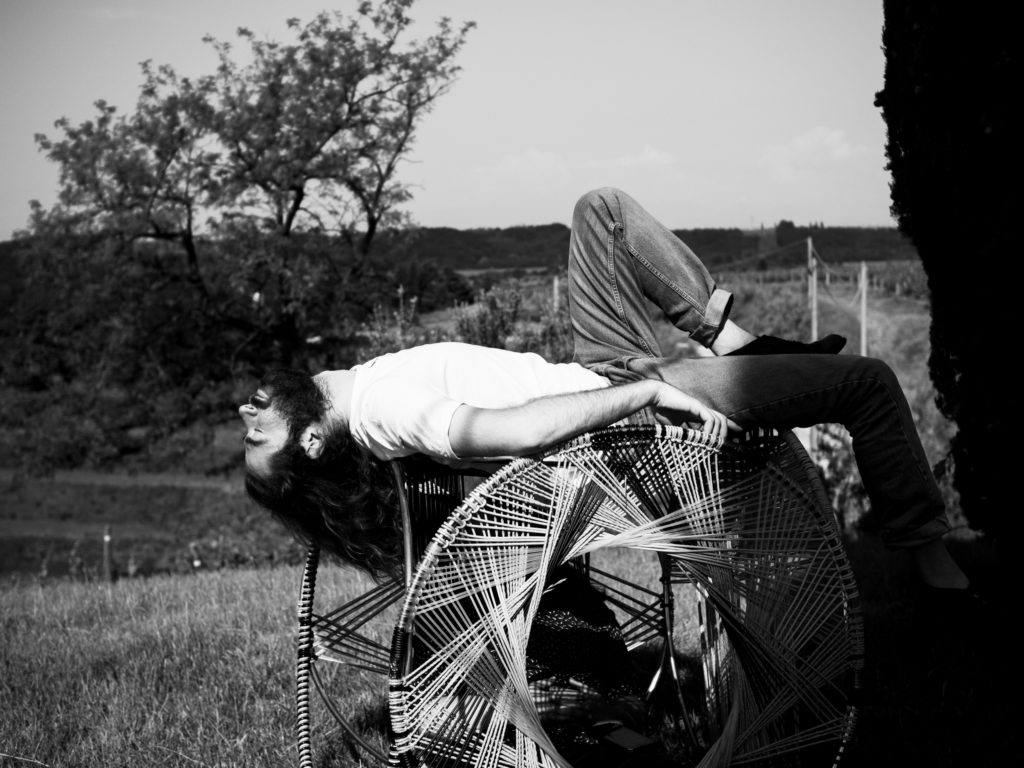
Lorenzo Lazzari, ph. Sergio Coretti
In genere si dice che “quando si sta bene il tempo vola”. Traete voi le conclusioni se vi dico che la settimana dal lunedì al sabato è stata per me un’unica, lunga giornata. L’intreccio dalla duplice valenza: quella di un prodotto realizzato attraverso questa difficile arte, e anche una sorta di metafora di ciò che è stata l’esperienza, l’incontro di personalità differenti che sono riuscite a creare un gruppo di lavoro coeso, tanto da avere lo sguardo già orientato verso nuovi progetti.
Arch. Elisa Scapicchio – Laureata alla Università Roma Tre
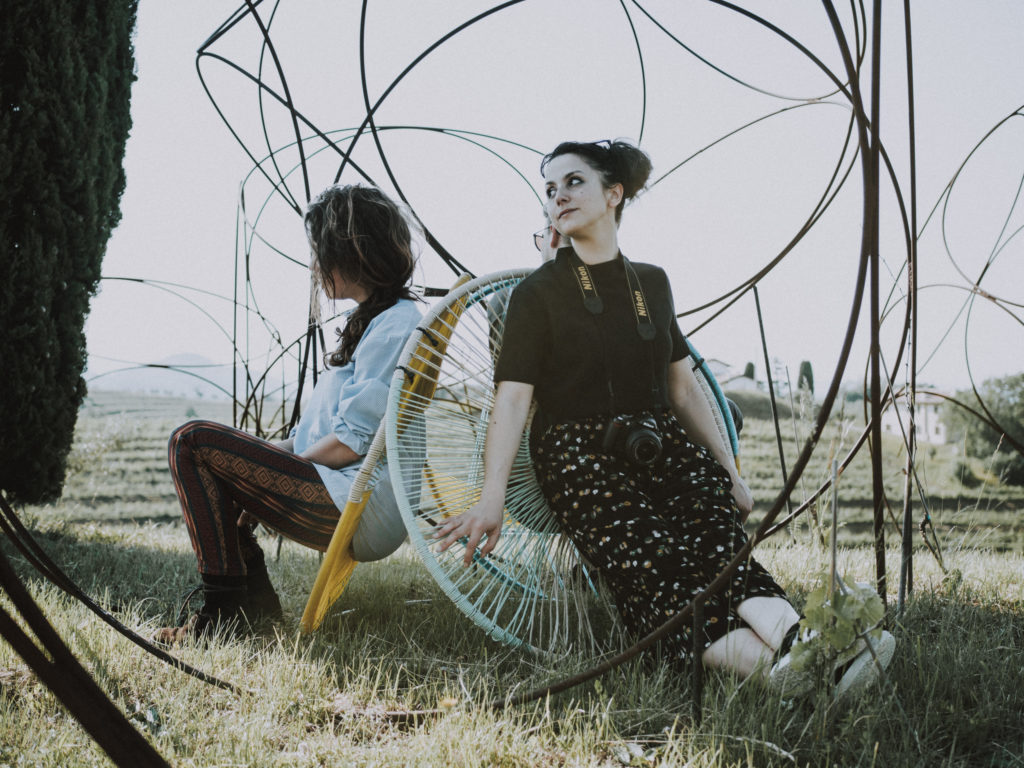
Elisa Scapicchio, ph. Sergio Coretti
Abbiamo vissuto il Vigne Museum in tre stagioni, abbiamo vissuto quella collina come un luogo di incontro in mezzo all’estensione territoriale carica di storia. L’idea di intrecciare i resti della vigna, i sarmenti, è nata spontanea: un materiale locale, organico, flessibile, che offre la possibilità di assemblare schermature dal sole, intrecciando vite e viti. I fili di materiale plastico, combinati a quelli organici, permettono svariati intrecci, funzionali, resistenti come seduta ed esteticamente validi. Ci siamo fatti guidare dal maestro locale ma poi abbiamo sperimentato le infinite possibilità, intreccio dopo l’altro. È chiaro che chiunque possa auto-costruirsi la sua seduta o riparo dal sole, dagli scarti naturali della campagna ai residui urbani ed industriali della città, sono tutti materiali facili da incontrare nei nostri contesti.
Arch. Daniela Serra e Arch. Antonio Vincenzo Sotgiu – Laureati all’ Università di Sassari / Alghero
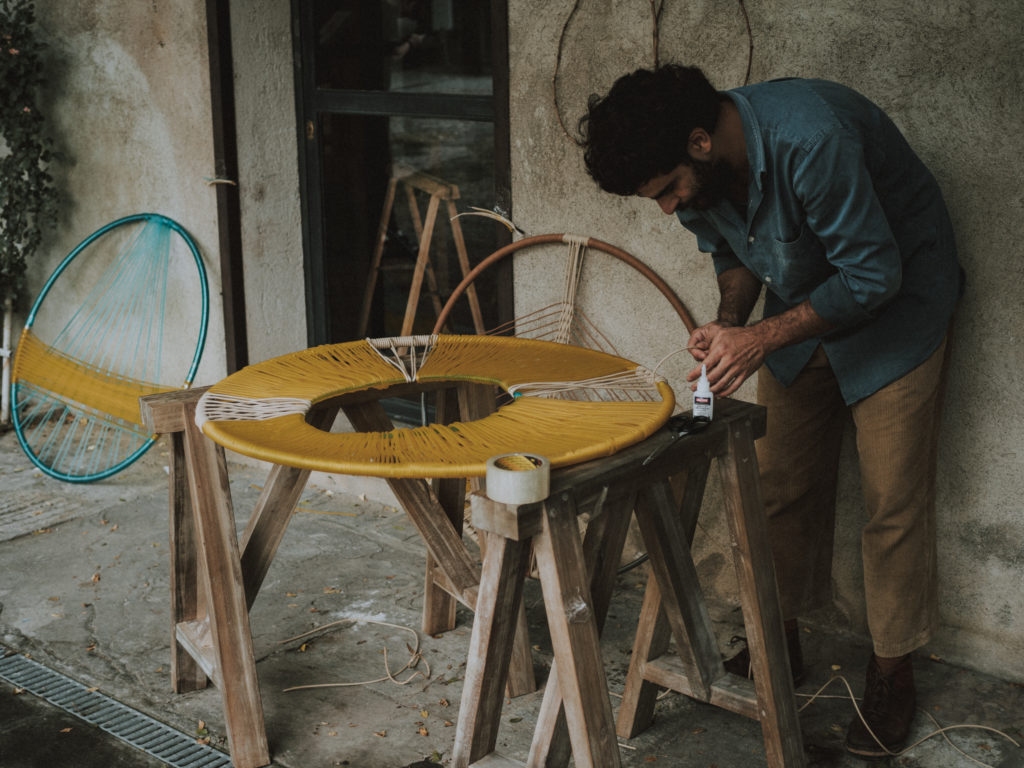
Antonio Sotgiu, ph. Sergio Coretti
Giorni trascorsi nell’ Abbazia di Rosazzo, insieme a giovani architetti, a sperimentare, cercare, approfondire, progettare. E poi intrecciare, legare, realizzare con le mani i pensieri che avevamo messo su carta. La scommessa era creare qualcosa che avesse radici profonde in quel luogo, che ne esaltasse la bellezza e nel contempo avesse un’utilità. Ho respirato passione e competenza sullo sfondo di lunghi filari di vite. E allegria e condivisione, nelle serate concluse davanti ad un buon bicchiere di vino rosso. Esperienza entusiasmante: un privilegio per me esserci stato. Grazie ai miei compagni di viaggio, e a tutte le persone che, con calorosa gentilezza, mi hanno permesso di partecipare e di imparare.
Filippo Zamparo – Università di Udine
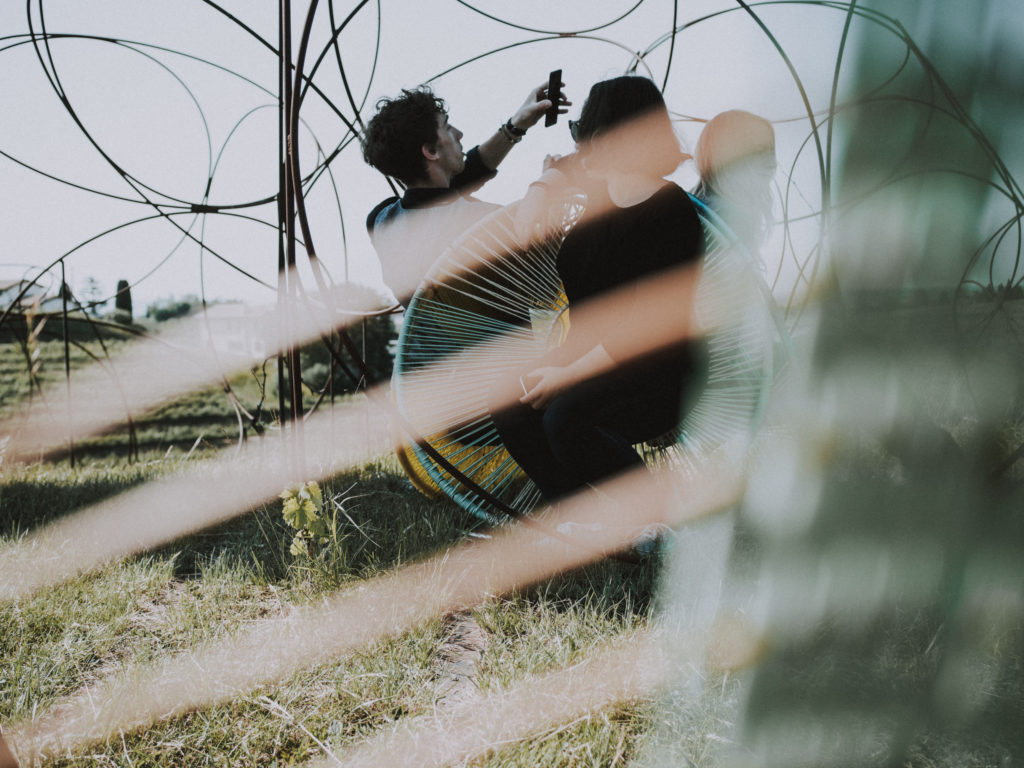
Filippo Zamparo, ph. Sergio Coretti
***
Self-production, self-organization, cooperation and attention to local traditions of craft and industry were the principles that guided the 12 students and young architects through their entire training process, from the design phase to the prototype production phase, for the first edition of the NOW Summer School at Vigne Musuem entitled Architecture for Nature.
This post gives space to the images and words of some of the participants to relive moments, emotions and anecdotes that occurred during the days spent designing, producing and shaping thoughts.
Our hands intertwined and clung together, they passed wine and bread, string and plant-cuttings, as they tightened further, knotting carefully and thoroughly. They were used to communicate with gestures, and then again to weave the PVC and support the frames, and build a space for the community. People have intertwined other kinds of relationships. And others with the vines, even more with the traditions, and it was all thanks to our hands.
Arch. Ilaria Canavese — Graduate of IUAV Venice
Looking at the metal rings and the skeins of wire, certainly frightened all of us a little: what would be the end result? But if working alone seemed impossible, two more hands were enough to support the circle and proceed with the technique of weaving, giving shape to the fantasies that were previously buried in a tangle of threads. And what an unexpected result! Compositions of colours and shapes, weaving of all kinds, modular seating, XXL toys for curious children … Watching them there, at the Vigne Museum, one can not help but think of the hands that have woven them, the relationships and friendships started in those days.
Arch. Lorenzo Lazzari – Graduate of IUAV Venice
It is often said that “when one is well, time flies”. Draw your conclusions if I tell you that the week from Monday to Saturday was like single long day for me. The interweaving of the double value: that of a product made through this difficult art, and also a sort of metaphor of the experience, the meeting of different personalities who managed to create a cohesive work group, in order to have their gaze turned towards new projects.
Arch. Elisa Scapicchio – Graduate of the Roma Tre University
We lived the Vigne Museum during three seasons, we experienced that hill as a meeting-point amid a region steeped in history. The idea of weaving thevine-prunings, the shoots, was born spontaneously: a local material, organic, flexible, which offers the opportunity to make sunblinds, weaving metal and vines together. The strands of plastic material, combined with the organic ones, allow various weaves, functional, durable as seats and aesthetically valid. We were guided by the local experts but after that we experienced the infinite possibilities, weaving one strand over another. It is clear that anyone self-build a seat or sunblind, from the natural scraps of the countryside to the urban and industrial residues of the city, they are easily materials to find in our environments.
Arch. Daniela Serra and Arch. Antonio Vincenzo Sotgiu – Graduates of the University of Sassari / Alghero
Days spent in the Abbey of Rosazzo, together with young architects, to experiment, to look, to deepen, to plan, and then to weave, bind, realize with our hands the thoughts we put on paper.The challenge was to create something that had deep roots in that place, which exalted its beauty and was useful at the same time. I inhaled passion and skill against the background of long rows of vines, and joy and sharing, in the evenings concluded in front of a good glass of red wine. A privilege for me to have been there, thanks to my traveling companions, and to all the people who, with warm kindness, have allowed me to participate and learn.
Filippo Zamparo – University of Udine

